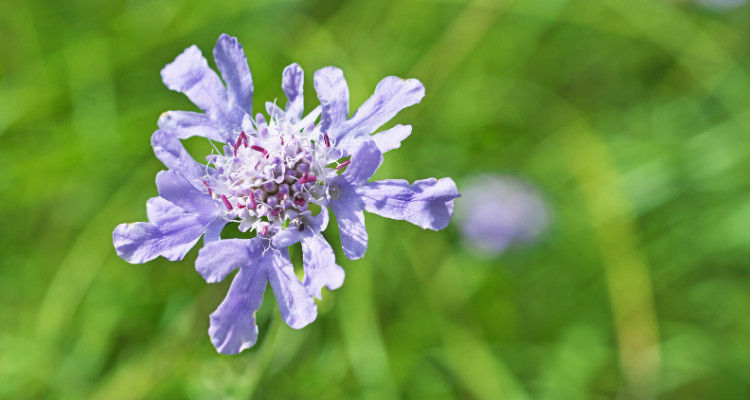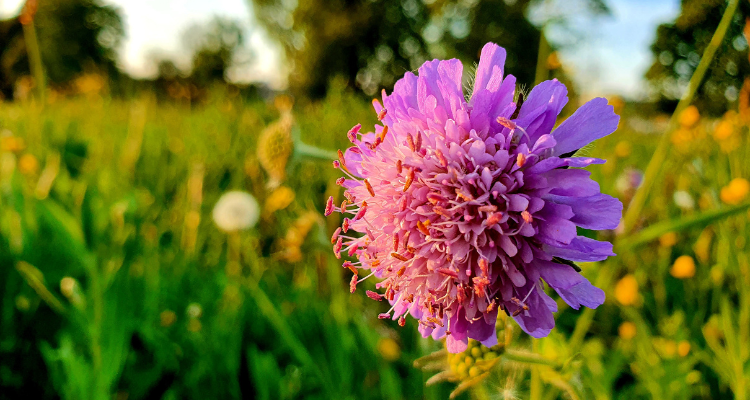
What We've Included
When to Plant | How to Plant | Where to Plant | After Care |
Propagating | Common Issues | When do they flower | Inspiration
When to Plant Scabiosa
Scabious can be planted from April to September when the ground is most pliable. However, they are hardy plants, and can be grown outside throughout the year if the ground can be worked. You can also pot them inside, keeping them somewhere frost-free and cool until you can plant them out in spring – if you prefer.

How to Plant Scabiosa
Planting Pot-Grown Plants or Modules
Pot-grown plants are another easy way to plant and grow your favourite plants. Whether you’re growing them directly outside into the border or into a container, our pot-grown plants are a breeze from the moment they arrive.
- Dig a hole in the border that’s big enough to house the root system. If planting in pots, fill a large pot halfway with potting soil and then make a well in the middle. Do this until the top of the soil from the plant is just below the top of the pot.
- Ensure the root ball is planted as deep as it was in its pot.
- Wedge in the plant by adding soil to the gaps in the hole, firming down the surface to ensure it’s in place. - Water well and you’re done!
Where to Plant Scabiosa
Scabiosa can be planted in a full-sun position in the garden but can withstand partial shade as long as their soil is moist and well-drained.

After Care
When to water Scabiosa
Scabious grown in pots will need regular watering. Border varieties should get enough water from rainfall, as they are highly drought-tolerant plants once they’ve been established.
How to Feed Scabiosas
Scabiosas grown in borders don’t need feeding as they get all their nutrients from the ground - feeding them will make them grow more leaves than blooms, so it will be counterproductive.
When to water Scabiosa
Scabious grown in pots will need regular watering. Border varieties should get enough water from rainfall, as they are highly drought-tolerant plants once they’ve been established.
How to Feed Scabiosas
Scabiosas grown in borders don’t need feeding as they get all their nutrients from the ground - feeding them will make them grow more leaves than blooms, so it will be counterproductive.
Can You Overwinter Scabiosas?
Some varieties of scabiosa are perennial and will come back after several years in a row before dying back. They do this by setting seed after flowering, so if you would like them to reappear, leave them to die back naturally in autumn.
Deadheading and Pruning
You can deadhead scabiosa blooms to encourage flowering and extend their season. Leave seed heads in place after flowering for a bloom the following year, and to feed birds.
Propagating Scabiosa
Most scabiosa set seed themselves, doing the job for you. You could even save the seeds from your annual scabious, sowing them out in autumn. Perennial varieties can also be propagated by division, which you can do in spring.
Pull the plant gently from the ground, ensuring the roots aren’t damaged in the process. Then use a sharp knife to cut the plant clumps in half. Replant further apart to ensure they’re not as crowded as before.

Common Issues and How to Solve Them
Scabiosa is typically a pest-free plant. You may experience some challenges in summer, as warm weather can cause powdery mildew.
To remedy this, add a layer of well-rotted organic matter to the base of the plants. This will help the plant to seal moisture around the roots.
When Does Scabiosa Flower?
Scabiosa will produce flowers anytime between June and August.
Ready to Shop?
Find some inspiration for your garden
